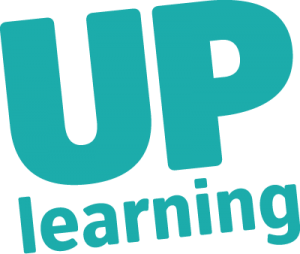New employees who develop into motivated, productive, loyal and successful workers in a short time.
At last. The enthusiastic newbie is about to begin. The team is back to full strength. Onboard and off you go. Oh yes, getting onboard. Do we have a good onboarding programme for new employees? There is quite a bit involved in good onboarding. What’s the secret weapon?
A bit of a shame
New employees have one characteristic in common and that is… Enthusiasm! Even though starting something new is often nerve-racking, it offers new opportunities and insights, and you will be doing something that your new employer desperately needs. Success guaranteed. Right? We often see that incorrect or vague mutual expectations and a lack of attention can kill this enthusiasm. That’s a bit of a shame. And costly in terms of time and money.
The onboarding programme is often the first real introduction to your new colleagues, the organisational goals, the business culture and the positive expectations on both sides. You should therefore make sure that your onboarding programme informs, stimulates, enthuses and promotes collaboration. So, let’s get to work on setting up a coordinated onboarding programme!
The benefits of onboarding
- brings new employees up to speed quickly
- increases engagement
- improves retention (of employees)
- improves the employer’s image/attractiveness for potential newcomers
- cost-effective, you don’t have to reinvent the wheel for every employee
and when it comes to online onboarding
- the content is easily reusable
- quality assurance (for everyone, always the same)
- time savings (new employees are productive sooner and less demand on using a professional’s time for training)
- shaped by ‘self-guided learning’ (proactive employees)
The phases of the onboarding process
A lot of research has been done on onboarding. If you are setting up an onboarding programme, first map out the process: what needs to be done and when. The infographic above shows an example of the phases in the process. Think of it as a practical tool for setting up the onboarding programme. Determine which goal is central to each phase. Then connect activities that contribute to the goal. Do this for both the organisation and the new employee.
So, what’s the secret weapon?
Does your organisation give employees a lot of responsibility for their own development? Then come up with activities in the onboarding process that encourage the new employees to do the same. For example, create a journey of discovery on which you can earn something. And make the journey as attractive as possible. Allow the combination of image and sound to work for you. And seek interaction. Some examples:
- Access to and locking of rooms. Send new employees out and allow them to discover how it works through augmented reality.
- How to act in a customer-oriented way. Use interactive video or VR to immediately show the consequences of choices or behaviour.
- Systematic training. An interactive screen capture ensures that everyone receives the same training, which can always be viewed again. And make whether everything is well understood measurable. It saves experts time having to give personal or group explanations each time.
- Familiarisation with the core values of the organisation. The CEO or manager explains them and shows what they mean in practice.
Self-guided learning and onboarding
We already mentioned it as an example. One didactic guideline you can use to maintain enthusiasm during the different phases of the onboarding process is self-guided learning. With this didactic approach, the learner takes control and responsibility for his or her own development.
In our daily lives, we are all getting more and more used to searching for information and knowledge ourselves, which we can apply just-in-time. How many experts offer their services on Google? You can ‘pick their brains’ absolutely free of charge. If you apply this didactic approach to your onboarding programme, you can capitalise on the employee’s motivation. The new employee will search for available information that contributes to his or her introduction, development and role in the organisation.
What does this mean for the design of your onboarding process? Discuss what the new employee will focus on, ask them to share what they have learned and encourage the tactics needed. Where can the information be found? Teach your new colleague how to search (and find). Don’t just offer what you think is needed. Before you know it, their ability to self-guide will have disappeared, along with their enthusiasm. That would be a shame, wouldn’t it?
Practice what you preach
As described above, it is important that your onboarding aligns with the organisation’s strategy. The new employee is introduced to the image that the organisation wants to project. It is important that the external image is also known internally, so: practice what you preach! At UP we believe in the power of self-guided learning. We communicate this message to our clients and implement it internally. The UP Onboarding Programme is based on these didactic guidelines. Employees search for the knowledge they need themselves. They learn about safety procedures through ‘augmented reality’. Even before their first day at work, they can watch the ‘introduction videos’ from their new colleagues and create their own. Appointments for introductory meetings? You plan some of these yourself.




